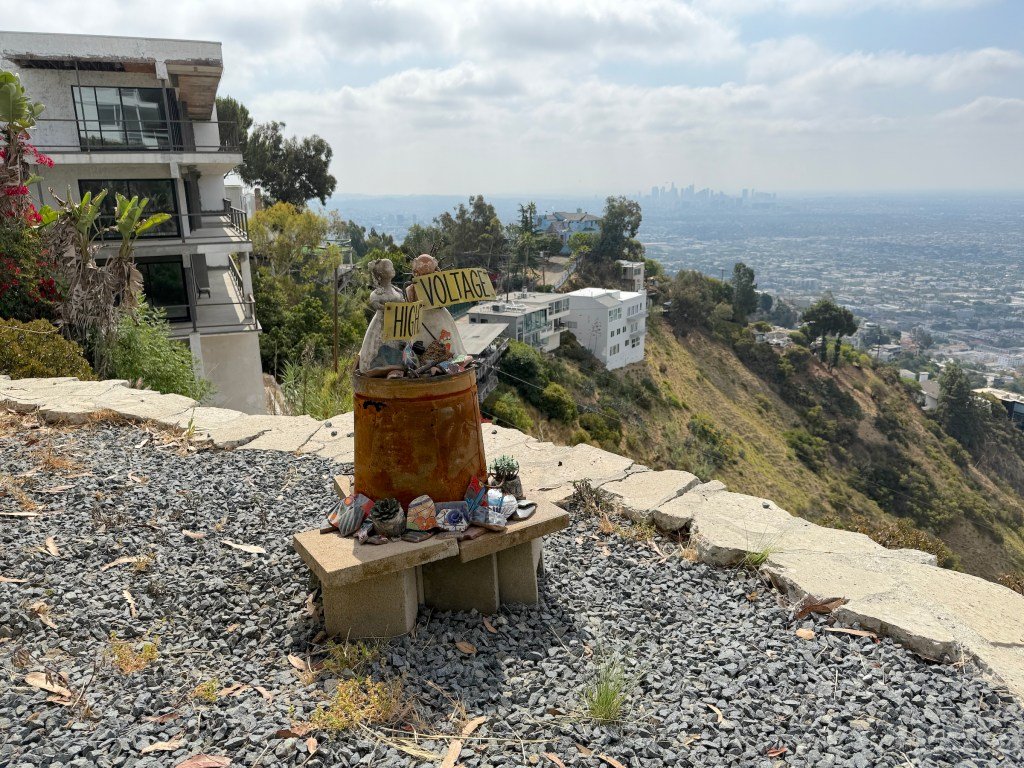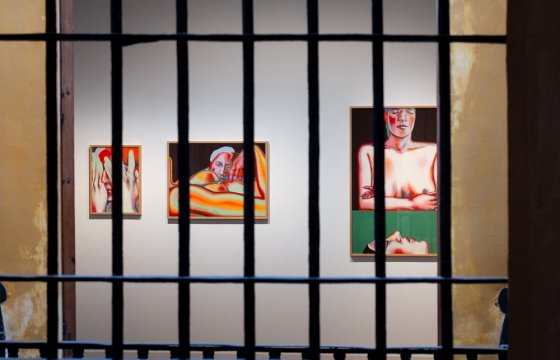

LOS ANGELES — In 1933, German-Jewish artist, art collector, and art dealer Galka Scheyer commissioned architect Richard Neutra to build her a house in the Hollywood Hills. Scheyer had moved to the United States in 1924 with the goal of promoting European modern art, specifically a group of artists known as the Blue Four: Lyonel Feininger, Wassily Kandinsky, Alexej von Jawlensky, and Paul Klee. The building would not only serve as her home, but also as a gallery and salon — an “airship,” as she called it — where artists, writers, and intellectuals could gather far above the glittering city below. She had also intended to create an artist residency, tapping architect Gregory Ain to design a second-story bedroom, but she died in 1945 at the age of 56, before it could materialize.
Eight decades later, her dream is taking shape, with the Galka Scheyer house reborn as the Blue Heights Arts and Culture residency where Temporary Home, a group show curated by artist Beatriz Cortez, offers glimpses of the site’s history and its future transformation.

The house was used as a private residence after Scheyer’s death, and remained so until last summer, when it was put back on the market. Benno Herz, program director at the Thomas Mann House, saw the listing and wrote an article about the property for a German newspaper. His story caught the eye of Max Grimminger, a German art collector, who purchased the home with the intention of preserving it and setting up a nonprofit artist residency. When the devastating wildfires swept through the Pacific Palisades and Altadena in January, they realized the building could serve an immediate need.
Jay Ezra Nayssan, founder of Del Vaz Projects, suggested they offer the space to artist Beatriz Cortez, who had lost her Altadena apartment in the Eaton Fire. After bouncing between friends’ homes for several weeks, Cortez moved into the house in March, becoming its first unofficial artist-in-residence.

While researching Scheyer, tracing threads that reach back across time and space, Cortez read about the social milieu she fostered in her home, hosting cultural figures such as John Cage, Bertolt Brecht, Maya Deren, Fritz Lang, and Greta Garbo, many of them German or Austrian émigrés. She thought about her own supportive creative community in LA and its familial histories of migration, and began hosting dinners, cooking feasts of paella or bean soup. Inspired by these connections, Cortez curated Temporary Home, engaging with the house’s history and echoes of displacement and solidarity while adapting Scheyer’s cultural refuge for contemporary times.
The exhibition is open by appointment the last two weekends in July, the final days of Cortez’s stay before the house closes for renovation.
In the center of the living room sits “Ceiba” (2023), a steel sculpture of a ceiba tree — which represents a portal to the underworld in Mayan mythology — created collaboratively by Cortez, Phillip Byrne, and Tatiana Guerrero. Metal parasites sprout from the welded surface of the volcano-like structure, while organic rubber and Mylar forms bubble up from its interior, a representation of multi-species hybridity. Nearby is rafa esparza’s “Xolotl” (2018), an adobe dog that draws on geometric Mesoamerican precedents, its head craning up at the viewer with an air of naturalism.

Esparza began making xolotl figures in 2018, inspired by his volunteer work a decade earlier with No More Deaths, an organization dedicated to preventing the death of migrants during their treacherous border crossings in the Sonoran Desert. In Aztec mythology, the xolotl is a guide to the afterlife, and esparza drew on these figures to honor those who had passed on. “I pressed as many dogs as I could,” esparza told Hyperallergic, “but I could not counter the insurmountable life lost in the desert.”
Placed on a ridge outside the house, Sarah Espinoza’s “Regalos del Fuego” (2025) overlooks the city. Assembled from ceramics and objects found on the site of her home, which was destroyed in the Eaton Fire, it stands as a memento mori and a reminder of the precarious balance between beauty and devastation that is ever-present in LA.

In the upstairs bedroom, an intimate wall niche houses esparza’s adobe sculpture “Hyperspace: simultaneous τ (stop time)” (2025), which references the monumental Olmec head that was displayed outside the Seagram Building and then at the Mexican Pavilion at the 1965 World’s Fair in New York. Esparza’s version is “caught at the apex of a worm hole,” he said, “time-travelling through space and time,” twisted and disfigured as it is wrenched from its original context. The work also ties into the house’s history: Scheyer had invited Frida Kahlo and Diego Rivera to visit, but died before they could make the trip. The sculpture is imagined as a gift Rivera might have brought from his vast collection of Mesoamerican art in an alternate timeline.

On the bedroom’s windows, Maria Maea has noted the dates, locations, and descriptions of several Immigration and Customs Enforcement (ICE) abductions in her piece “Then They Came” (2025). When ICE began descending on immigrant communities across LA in early June, Scheyer’s house on the hill felt especially disconnected from the reality taking place in the city below.
Cortez worried about the predominantly Latine construction workers and gardeners working on the stately residences she would pass on the windy roads up to her temporary home. “If there’s a raid here, who’s going to come out and document [it]?” she wondered.
Maea also struggled with how to address the state-sanctioned violence and disappearances. “At times like this, what is the role of an artist? We make things visible,” she told Hyperallergic. Each abduction chronicled in her piece is marked by a long blade of grass, pointing to the actual location of each incident as seen through the window. When the viewer stands in the right spot, the window serves as a map of the city, bringing the stark reality of the crisis below into sharp focus.

Community and celebration shine through a Marjorie Williams’s photograph recreating Angelica Archipenko’s 1934 image of revelers reflected in the house’s windows, the city lights fanning out behind their silhouettes. Williams’s version features Cortez, Byrne, fellow artist Fidencio Fifield-Perez, and Cortez’s UC Davis graduate students during a recent communal meal.
“From what I understand of Galka, this is work she would be proud of, smiling upon, that the house is still being used for this level of communication,” Maea said.


